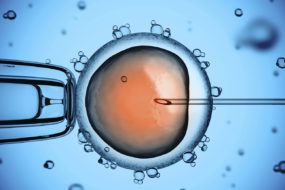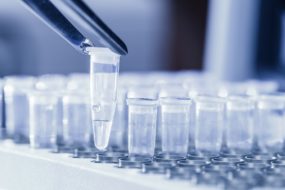is a fertility treatment that involves placing sperm inside a woman’s uterus to facilitate fertilization. The goal of IUI is to increase the number of sperm that reach the fallopian tubes and subsequently increase the chance of fertilization.
Blastocyst Culture
Blastocyst Culture programmes

Blastocyst culture programmes ranging from:
-
Intrauterine insemination (IUI)
-
In Vitro Fertilization (IVF)
IVF is the process of fertilization by extracting eggs, retrieving a sperm sample, and then manually combining an egg and sperm in a laboratory dish. The embryo(s) is then transferred to the uterus. Other forms of ART include gamete intrafallopian transfer (GIFT) and zygote intrafallopian transfer (ZIFT).
-
Intracytoplasmic sperm injection (ICSI)
is an in vitro fertilization (IVF) procedure in which a single sperm is injected directly into an egg.
-
Ovum donation & embryo donation
Egg Donation
By far the more common type of donation that takes place in surrogacy is egg donation. In this process, women consent to donate an unfertilized egg, with the intention of having that egg later fertilized and ultimately transferred into the uterus of either an intended mother or of a surrogate. It is important to note that the egg is not yet fertilized, and without successful fertilization, will never lead to a successful pregnancy or birth. In this case, the donor is always the person to whom the genetic material originally belonged.
Embryo Donation
In this process, an intended parent (or parents) will attempt to join the donated egg from an egg donor with sperm from either a donor or an intended father with the hopes of creating a viable embryo. This embryo is capable of becoming a fetus, and eventually a live baby, if it is transferred into a uterus and implantation and growth occurs. In some cases more embryos are created than what is needed in order to achieve pregnancy. In these cases, there may be viable embryos that are no longer needed or desired by the intended parents. In these cases, some intended parents may opt to donate these embryos to other intended parents or to scientific research. In the case of embryo donation, the donor is generally the person to whom the genetic material originally belonged. (In some cases an intended mother can act as her own egg donor, and eventually may also act as an embryo donor.)
-
Donor sperm
is the provision (or “donation”) by a man (known as a sperm donor) of his sperm (known as donor sperm), principally for it to be used in the artificial insemination of a female or females who are not his sexual partners.
-
IVF surrogacy
Gestational surrogates. A technique called “in vitro fertilization” (IVF) now makes it possible to gather eggs from the mother, fertilize them with sperm from the father, and place the embryo into the uterus of a gestational surrogate. The surrogate then carries the baby until birth.
-
HIV discordant / HIV positive couples
Discordant couples are those where one partner is HIV-infected and the other is not. A couple is defined as two persons in an ongoing sexual relationship and each of these persons is referred to as a “partner” in the relationship.
-
Preimplantation genetic diagnosis (PGD)
is a procedure used prior to implantation to help identify genetic defects within embryos. This serves to prevent certain genetic diseases or disorders from being passed on to the child.
Book Initial Consultation, Call +27 (031) 267-7920
Fees are an estimate only and may be more depending on your situation
- CONTACT US TODAY




